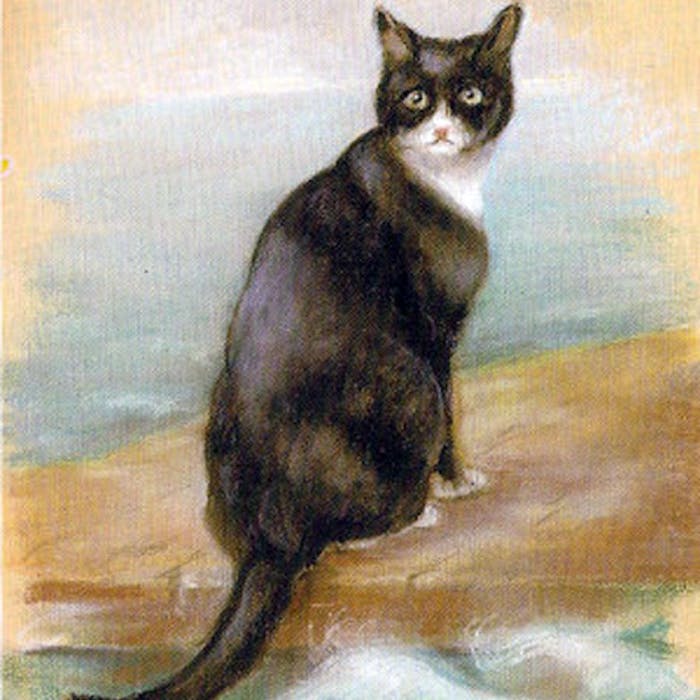
Unsinkable Sam, the cat that saw action on both sides in WW2
Unsinkable Sam (also known as Oskar or Oscar) is the nickname of a ship's cat who purportedly served during World War II with both the Kriegsmarine and the Royal Navy and survived the sinking of three ships.
German battleship Bismarck was destroyed following an intense three-day battle against the British Royal Navy on 27th May, 1941. Only 118 from its crew of over 2,200 survived, as well as a black and white cat who was spotted on wreckage and taken aboard British battleship, the HMS Cossack. The crew called him Oscar, which is also sometimes spelled Oskar because of his German origins. According to the International Code of Signals, a square, diagonally red and yellow flag is called Oscar, and denotes “man overboard.” This may be the reason the British called the cat by this name.
The cat served on board Cossack for the next few months as the ship carried out convoy escort duties in the Mediterranean and north Atlantic.
On 24th October 1941, Cossack was escorting a convoy from Gibraltar to Great Britain when she was severely damaged by a torpedo fired by the German submarine U-563. 159 of the crew were killed by the initial explosion and the Cossack sank on 27th October, but Oscar survived again and was brought to the shore establishment in Gibraltar.
Now nicknamed Unsinkable Sam, the cat joined the crew of aircraft carrier HMS Ark Royal, which coincidentally had been instrumental in the destruction of Bismarck (along with Cossack). Returning from Malta on 14th November 1941, this ship too was torpedoed. The slow rate at which the ship sank meant that all but one of the crew could be saved. Sam was found clinging to a piece of wood by a motor launch and described as "angry but quite unharmed".
After this third sinking in three months, it was decided that Sam's sea-going days were over and he was transferred first to the offices of the Governor of Gibraltar and then sent back to live in a seaman's home in Belfast.
Sam died in 1955.
A pastel portrait of Sam (titled Oscar, the Bismarck's Cat) by the artist Georgina Shaw-Baker is in the possession of the National Maritime Museum in Greenwich and is shown above. She specialised in portraits of pets associated with war.
Some spoilsports have doubted the veracity of this tale, particularly Oscar's origins on the Bismarck, as the rescue of a limited number of survivors took place in desperate conditions, British ships were ordered not to stop as there was believed to be a U-boat in the area, and many survivors were left to die of exposure. There is no mention of this incident in Ludovic Kennedy's detailed account of the sinking, suggesting that information later gleaned from sailors regarding the cat's military history may have been apocryphal.
Further reading
Links to external websites are not maintained by Bite Sized Britain. They are provided to give users access to additional information. Bite Sized Britain is not responsible for the content of these external websites.
